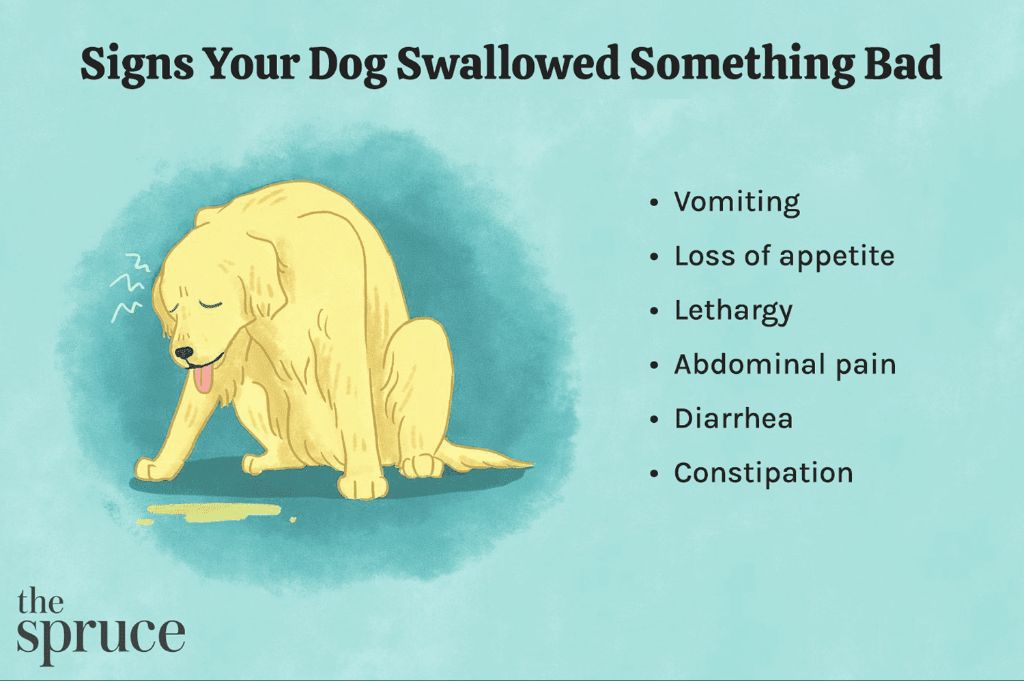Introduction
Seeing tiny specks of blood in your dog’s vomit can be alarming. The specks are likely small amounts of blood that have come up from your dog’s gastrointestinal tract. This symptom is concerning because it can indicate a serious underlying condition such as an ulcer, inflammation, or even cancer somewhere along the digestive system.
While the amount of blood may seem minimal, any presence of blood in vomit should not be ignored. It’s important to identify the cause through diagnostic testing, as certain conditions will require swift veterinary treatment. Left unchecked, the source of bleeding can worsen over time. Understanding why your dog is vomiting blood is the first step toward getting them the right care.
Possible Causes
There are several possible causes for blood in a dog’s vomit. Some of the most common include:
Ingestion of Foreign Objects
Dogs may vomit blood after swallowing foreign objects like bones, toys, rocks, or sticks. These objects can scratch or puncture the esophagus, stomach, or intestines, leading to bleeding and vomiting (PetMD).

Gastrointestinal Ulcers
Ulcers in the esophagus, stomach, or upper small intestine can erode into blood vessels and cause bleeding. Ulcers may be caused by irritation from bile reflux, certain medications like NSAIDs, stress, or infections (Hill’s Pet).
Inflammation/Infection
Inflammation and infections in the GI tract, like gastritis or inflammatory bowel disease, can damage the intestinal lining and lead to bloody vomit. Parasites may also cause inflammation and bleeding.
Cancer
Tumors affecting the GI tract can ulcerate and result in bleeding. Hemangiosarcoma, which causes malignant tumors in blood vessels, is a common cancer that can lead to vomiting blood.
Coagulation Disorders
Disorders like rodenticide toxicity, liver disease, and blood clotting factor deficiencies can result in impaired blood clotting and bleeding.
When to See the Vet
Any amount of blood in your dog’s vomit is concerning and warrants a call to your veterinarian (Hill’s Pet Nutrition, 2022). More substantial amounts of blood or persistent vomiting are considered emergencies requiring urgent veterinary care. You should seek emergency vet assistance if your dog is:
- Vomiting large amounts of bright red blood
- Vomiting blood repeatedly over several hours
- Showing signs of shock like weakness, rapid heart rate, pale gums
- Acting extremely lethargic or non-responsive

Calling your vet promptly whenever you see blood in vomit can help get your dog the right treatment faster. Don’t wait to see if the vomiting resolves on its own.
Diagnosis
The vet will start with a physical exam to check for signs of disease and take the dog’s medical history. They will ask about any recent illnesses, injuries, or exposure to toxins that could cause gastrointestinal bleeding.
Bloodwork such as a complete blood count and biochemistry panel can check for issues like clotting disorders, infections, liver or kidney problems, and cancers that could lead to bloody vomit. Tests for parvovirus may also be recommended if the dog is not vaccinated.
Imaging tests like X-rays or ultrasound allow the vet to examine the esophagus, stomach, and intestines for abnormalities, foreign objects, masses, ulcers, or obstruction. These tests can identify sources of bleeding or rule out certain conditions.
Endoscopy and biopsies may be used to directly visualize the GI tract and collect tissue samples for analysis. This helps identify causes of bleeding like ulcers, tumors, or infiltrative diseases.
Treatment
Treatment for a dog vomiting blood depends on the underlying cause of the condition. According to PetMD, the vet will first need to diagnose the root cause before determining the appropriate treatment plan (https://www.petmd.com/dog/symptoms/why-my-dog-throwing-blood).
If the cause is something like an irritated digestive tract or a stomach ulcer, medication may be prescribed to soothe inflammation and prevent further damage. Medications like antacids, H2 blockers, or proton pump inhibitors can help treat ulcers and gastrointestinal issues (https://www.hillspet.com/dog-care/healthcare/dog-vomiting-blood).
In some cases, dietary changes may be recommended. The vet may prescribe a bland diet or easy-to-digest food to give the stomach and intestines a chance to heal. Avoiding fatty, spicy, or irritating foods can help prevent vomiting and irritation.
If there is a foreign object, tumor, or other obstruction causing the bleeding, surgery may be necessary to remove the problem and stop the vomiting. The specific treatment plan will depend on the diagnosis after examination and testing.
Home Care
If your dog is vomiting blood at home, there are some initial steps you can take while waiting to see the vet:
- Withhold all food for 12-24 hours to give the gastrointestinal tract a chance to rest. Do not allow your dog to eat anything during this time.
- After the fast, slowly introduce small amounts of a bland diet such as boiled chicken and rice. Give several small meals per day rather than one large meal.
- Make sure your dog stays well-hydrated by providing access to fresh water at all times. You can also use an oral syringe to give small amounts of water slowly and frequently.
- Monitor your dog closely for any worsening of symptoms like increased vomiting, bloody diarrhea, weakness, or collapse. If symptoms worsen, get veterinary care immediately.

While caring for a dog vomiting blood at home, be very cautious. Seek veterinary advice before introducing any medications or home remedies. The main focus should be on resting the stomach, hydration, and close monitoring of symptoms. If in doubt, take your dog to the vet right away.
Prevention
There are several things you can do to help prevent your dog from vomiting blood:
Avoid ingestion of foreign objects – Make sure your dog does not have access to items they could swallow, like socks, rocks, toys, etc. Keep all such objects out of reach.
Don’t overfeed – Overfeeding can lead to vomiting, so stick to the portion guidelines on your dog’s food. Feed smaller, more frequent meals if needed.
Manage underlying conditions – If your dog has conditions like inflammatory bowel disease, get them the treatment they need. Follow your vet’s advice for managing any health issues.
You can also keep your dog’s routine vet visits and vaccines up to date. Use monthly heartworm and flea/tick prevention medication as directed. And know the signs of bloat in larger, deep-chested dogs.
With proper care and prevention, you can reduce the chances of your dog vomiting blood from preventable causes.
Prognosis
The prognosis for dogs vomiting a small amount of blood is generally good when proper treatment is provided quickly (https://bondvet.com/b/why-is-my-dog-throwing-up-blood). Most underlying causes like ulcers, ingestion of foreign objects, or parasites can be treated with medications, diet changes, and monitoring. The prognosis is worse if the underlying cause is cancer or if treatment is delayed.
With prompt veterinary care, most dogs will make a full recovery. However, in cases of severe blood loss or late treatment, the prognosis declines. It’s critical to get veterinary assessment as soon as possible if your dog is vomiting blood, as early treatment greatly improves the outlook.
When to Call the Vet Again
If your dog’s condition seems to worsen or does not improve within 1-2 days, contact your veterinarian right away. Some signs that warrant another vet visit include:
- Persistent vomiting that lasts more than 24 hours
- Increasing lethargy or lack of energy
- Complete loss of appetite or refusal to eat
- Bloody vomit that reoccurs or contains larger amounts of blood
- Black, tarry stool indicating digested blood
- Signs of dehydration like dry gums or eyes
- Fever
- Abdominal pain or bloating

Returning to the vet promptly when symptoms persist or worsen is crucial, as ongoing vomiting of blood can quickly lead to dehydration, anemia, or other complications. Don’t wait to see if your dog improves on their own. Call the vet clinic to schedule a follow up appointment or emergency visit if your dog’s condition appears to be deteriorating.
Conclusion
In summary, seeing specks of blood in your dog’s vomit can be alarming, but the prognosis is often good with prompt veterinary care. The potential causes range from mild gastroenteritis to more serious conditions like ingestion of toxins or a gastrointestinal ulcer. Diagnosis from your veterinarian involves a physical exam, lab tests, and potential imaging to pinpoint the cause. Treatment depends on the underlying issue but may include IV fluids, medications, diet changes, or surgery. While home care like withholding food for a day can help, it’s crucial to get your dog seen if repeated vomiting with blood occurs. Though scary at first, most dogs recover fully when the right treatment is provided. Stay vigilant for further vomiting or any signs of weakness and contact your vet right away if they return. With close monitoring and care from you and your veterinarian, your dog can get back to feeling their normal happy and energetic selves.
